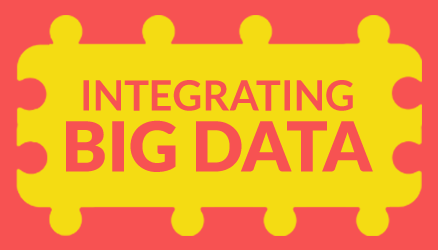Big data is the term for a collection of data sets so large and complex that it becomes difficult to process using on-hand database management tools or traditional data processing applications.
5 Simple Ways To Make Big Data Really Work For Your B2B Organization:
1. Scale down your aspirations for Big Data. Focus on cleaning your current lists (email marketing, CRM, social, and so on) as a priority. Improve communication between departments. Break down those silos and bring sales and marketing closer to each other. Use your current smaller-scale data sets to deliver personalization and campaigns with imagination. You can target the audience you already know and love and get to know them better.
As an example, start by understanding who the real buyer in a company is. Identify the stakeholders in decision-making, rather than spending time on the people doing the research. This will assist with conversions and your sales team will love you for it. It is, after all, the time of good cheer and goodwill!
2. Use social data. It may not qualify as the stereotypical Big Data, but it can actually be a big deal. You can generate suitably large data sets such as marketing campaign results – clicks, likes, shares, tweets, diggs and so on. This social data will help to provide your company with near real-time information about sales and marketing efforts. Patterns can become apparent in such data sets – for example, over multiple campaigns – that are invisible with limited data. This is one of the reasons why curation and sharing of data between departments is so important. To achieve a big data set you need to collect useful data and then manage it efficiently. The foundation for useful social data is a sustainable social strategy.
3. Understand buyer behaviour. Once the patterns are understood, you can track individual users. For example, with a cookie on your site and then a unique identifier within your system to begin to understand prospect behaviour. This means you can nurture prospects based on a known likelihood of behavior. It also allows every department to see the buyer’s position in the purchase process and pick up the ball accordingly. Follow best practice and use B2B lead generation tactics that are known to work.
4. Collaborate. Be alert that friction can occur when sales and marketing are both pushing for the same target. Understanding how to manage data is vital. For instance, your CRM system or behavioural data that you have collected from previous or current campaigns, on and offline, leads and conversions. Departments can then collaborate rather than gate-keep data to hit their own targets. As I’ve said before, change before you have to, and think conversion.
5. Plug the holes. A majority of B2B buyers will contact or entertain contact with your sales team far later in the day than previously. Typically, around 75% of the purchase-related research is now done online or independently, prior to making or taking a call that may lead directly to a sale. Marketing (plus all the information and content you have created for customer ‘self-study’) therefore, is playing a greater part in the buying process than ever before. The more data you can collect, the more indications you will have of your weaknesses and where you are losing potential sales or leads from the funnel. You can then structure your activities to re-capture those losses. Simplify and grow customer engagement through personalization.
Source: http://customerthink.com/5-ways-big-data-can-be-big-deal-b2b/











